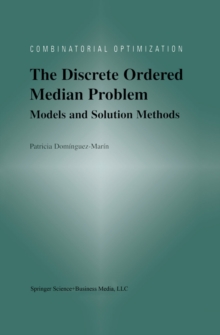
Discrete and Fractional Programming Techniques for Location Models PDF
by A.I. Barros
Part of the Combinatorial Optimization series
Description
At first sight discrete and fractional programming techniques appear to be two com- pletely unrelated fields in operations research.
We will show how techniques in both fields can be applied separately and in a combined form to particular models in location analysis.
Location analysis deals with the problem of deciding where to locate facilities, con- sidering the clients to be served, in such a way that a certain criterion is optimized.
The term "facilities" immediately suggests factories, warehouses, schools, etc. , while the term "clients" refers to depots, retail units, students, etc.
Three basic classes can be identified in location analysis: continuous location, network location and dis- crete location.
The differences between these fields arise from the structure of the set of possible locations for the facilities.
Hence, locating facilities in the plane or in another continuous space corresponds to a continuous location model while finding optimal facility locations on the edges or vertices of a network corresponds to a net- work location model.
Finally, if the possible set of locations is a finite set of points we have a discrete location model.
Each of these fields has been actively studied, arousing intense discussion on the advantages and disadvantages of each of them.
The usual requirement that every point in the plane or on the network must be a candidate location point, is one of the mostly used arguments "against" continuous and network location models.
Information
-
Download - Immediately Available
- Format:PDF
- Publisher:Springer US
- Publication Date:21/11/2013
- Category:
- ISBN:9781461540724
Other Formats
- Hardback from £81.69
- Paperback / softback from £65.85
Information
-
Download - Immediately Available
- Format:PDF
- Publisher:Springer US
- Publication Date:21/11/2013
- Category:
- ISBN:9781461540724










